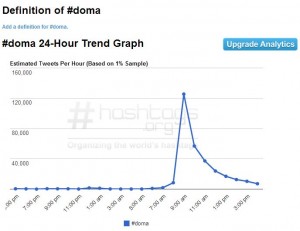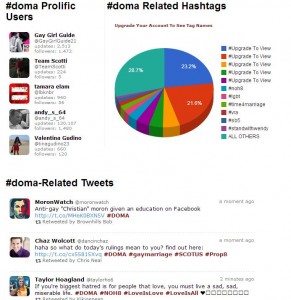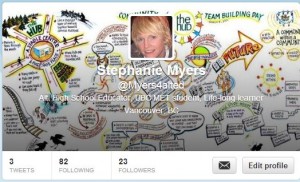So, I’ve spent the last couple of weeks searching out information on aggregators. As I mentioned in a previous post, I had downloaded Google Reader to my phone during a previous course in order to follow classmates’ blogs but otherwise I hadn’t really used an aggregator before.
In a recent discussion thread posted in my ETEC 590 class I asked people what they used as part of their PLNs and if they had aggregator preferences what were they.
I had a universal response on Tweetdeck. It seems that anyone who uses Twitter, organizes their incoming tweets using Tweetdeck. So, here’s what I discovered.
Tweetdeck is great – for computers – not so for phones, tables, etc. Essentially, when Twitter bought Tweetdeck they decided to focus their energies on creating a better mobile version of Twitter and so canned the mobile version of Tweetdeck. Thankfully Tweetdeck options for home are still available, and according to some reviews, better than ever. icopilot1 has been kind enough to give a video walk-through of the new Tweetdeck.
So, I signed up, which was super easy and I set up a few columns using hashtags such as #edtech, #bced, #cdned, and #alted. Tweetdeck automatically includes other columns like timeline what you would see if you stick with just twitter), interactions (tweets whenever your #name appears), and activities (basically whatever anyone else that you follow does i.e. “#jimsmith followed #becool”. Personally I find activities and interactions a little unnecessary. After a couple of days I deleted them to make way for more columns on subjects of interest to me.
So what do I think? Well, in three words or less – I LOVE IT! At first it is a little overwhelming. I felt like a trader sitting down to my computer with my morning coffee but I absolutely see the value of staying up to date, adding favourites to the ones I want to get back to. It is a great way to get a lot of information without committing an incredible amount of time.
There seems to be only one other giant alternative to Tweetdeck for home and that is Hootsuite. It does have a mobile option as well. Steve Dotto has a great Youtube ssummary of Hootsuite here. It has LOTS of capabilities and would definitely be worth checking out if you want to have multiple people using the same account. It also has collaboration options with: Facebook, WordPress, Google, LinkedIn etc. All I can say is do your homework. I personally DID NOT want an aggregator with imposed relationship with Facebook or Instagram or other tools like that. So, that said, I opted for Tweetdeck.
As for the lack of Tweetdeck for my smartphone – I haven’t resolved that yet. I have been using the Twitter app on my android and so far that is enough for me. I can’t miss something that I never tried.
Others who are accustomed to Tweetdeck seem pretty devastated by it’s demise. However there are lots of other options available. You just have to look around and do the research. Many of the existing products may be linked to other social media providers like: Facebook, Instagram, There are other options out there like: Tweetcaster (all mobile options, free but includes banner ads, get rid of ads for $4.99), Twitterific (iOS), Plume (android and costs $4.99 but looks awesome), Tweetbot (iOS equivalent to Plume – $2.99).
As I said, for now I am sticking with twitter’s mobile version but I am really interested in Plume.
There is still much work to do…Now I’m on to a means of replacing my Google Reader and how to find bloggers worth connecting with on a regular basis. More to follow.




